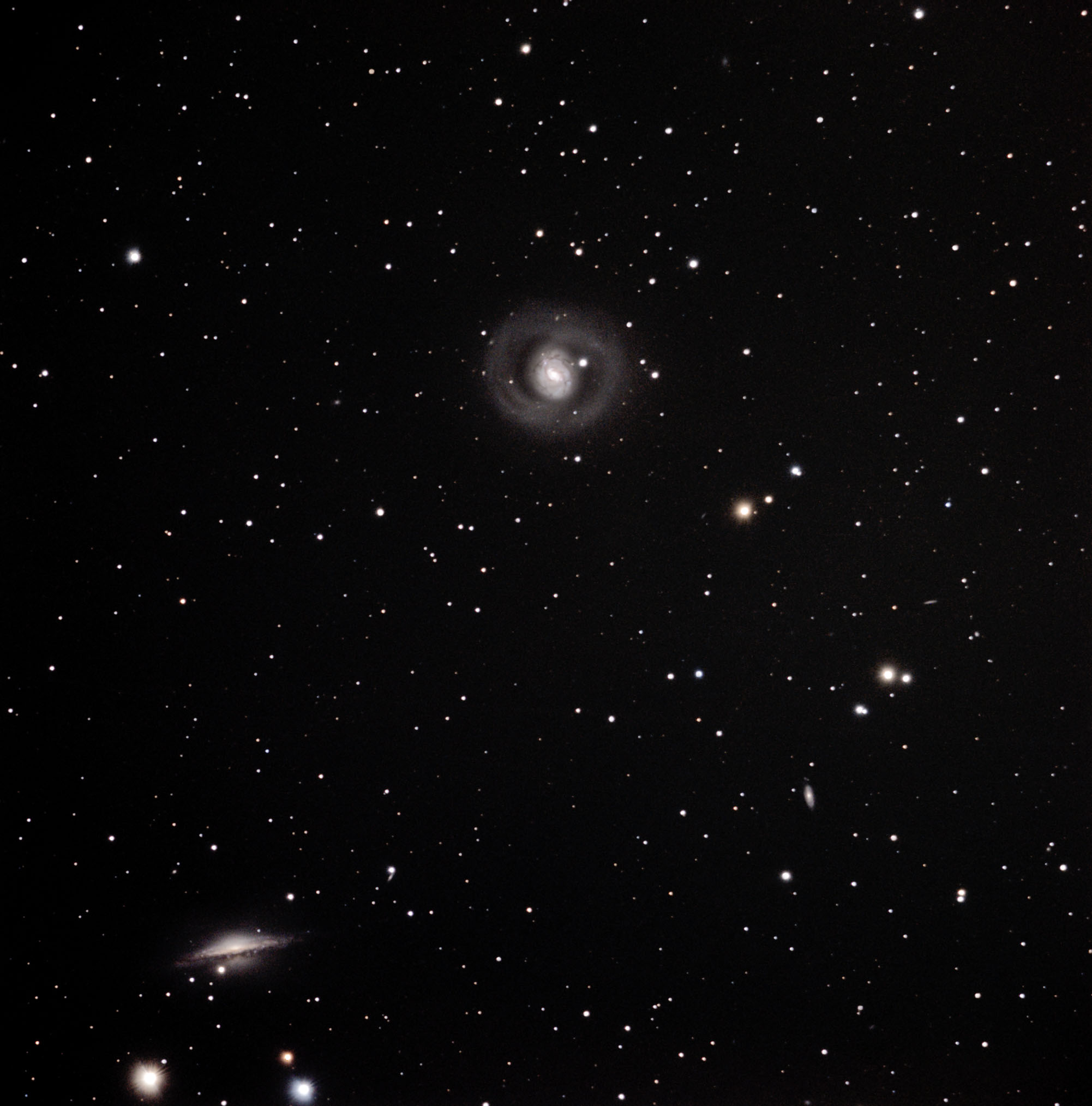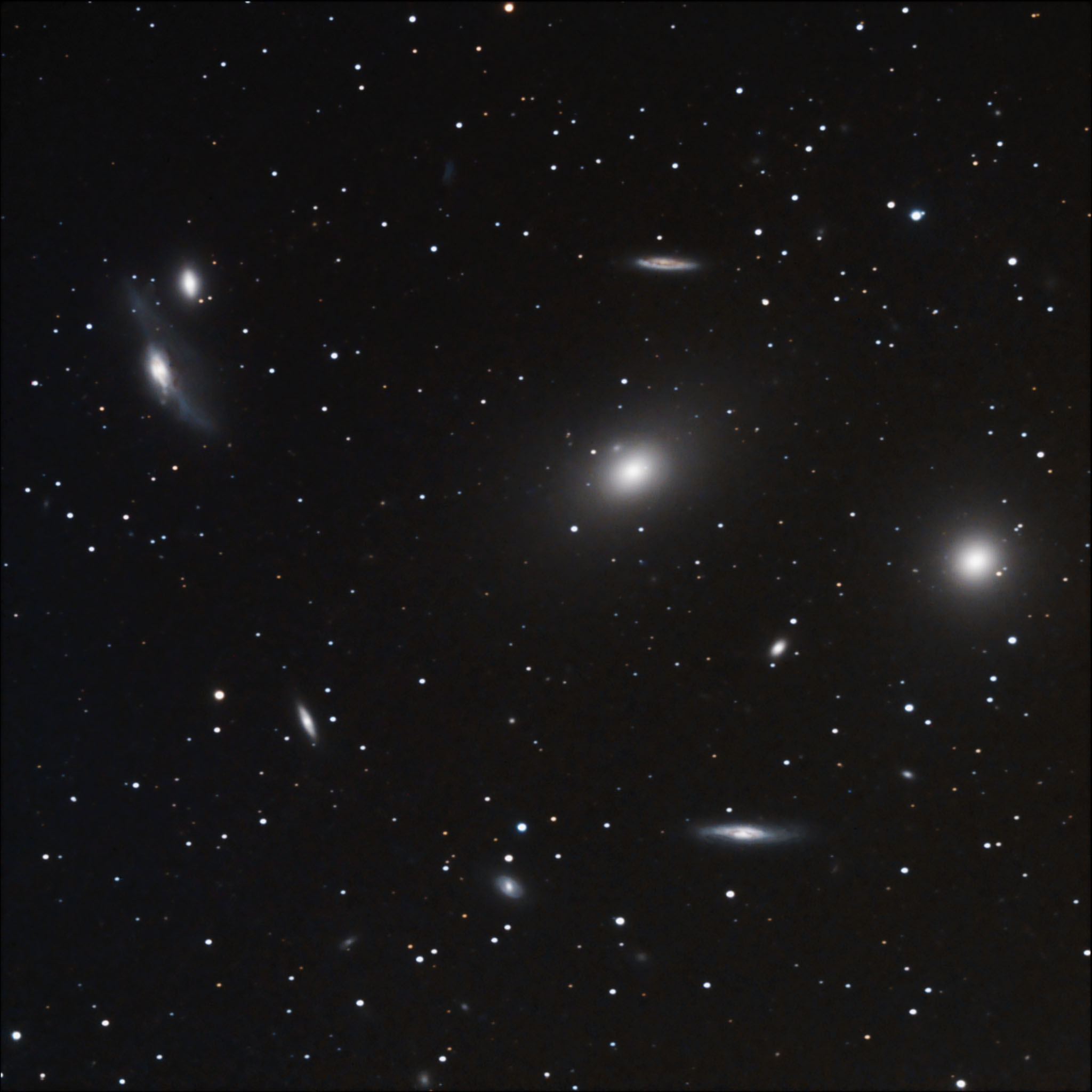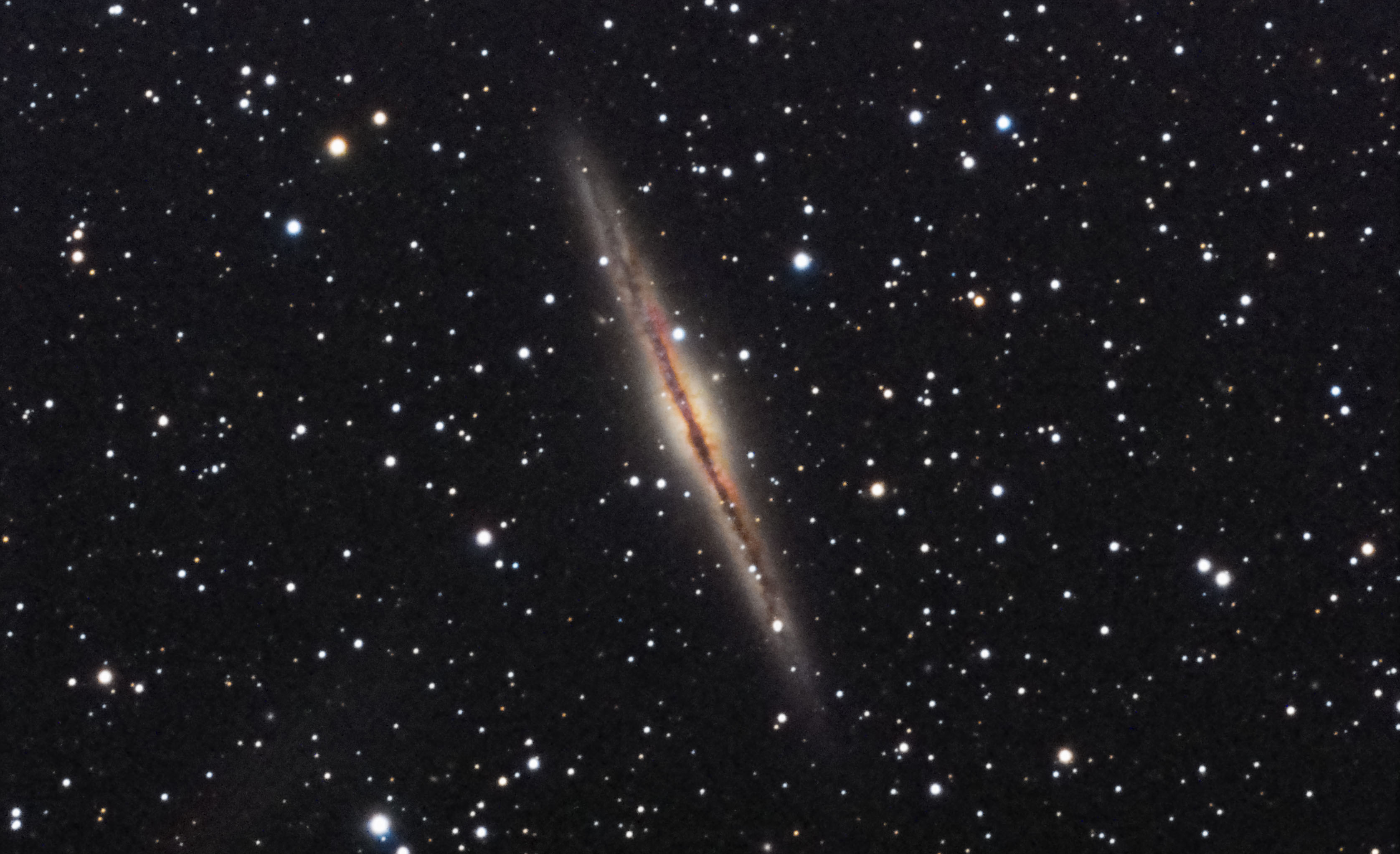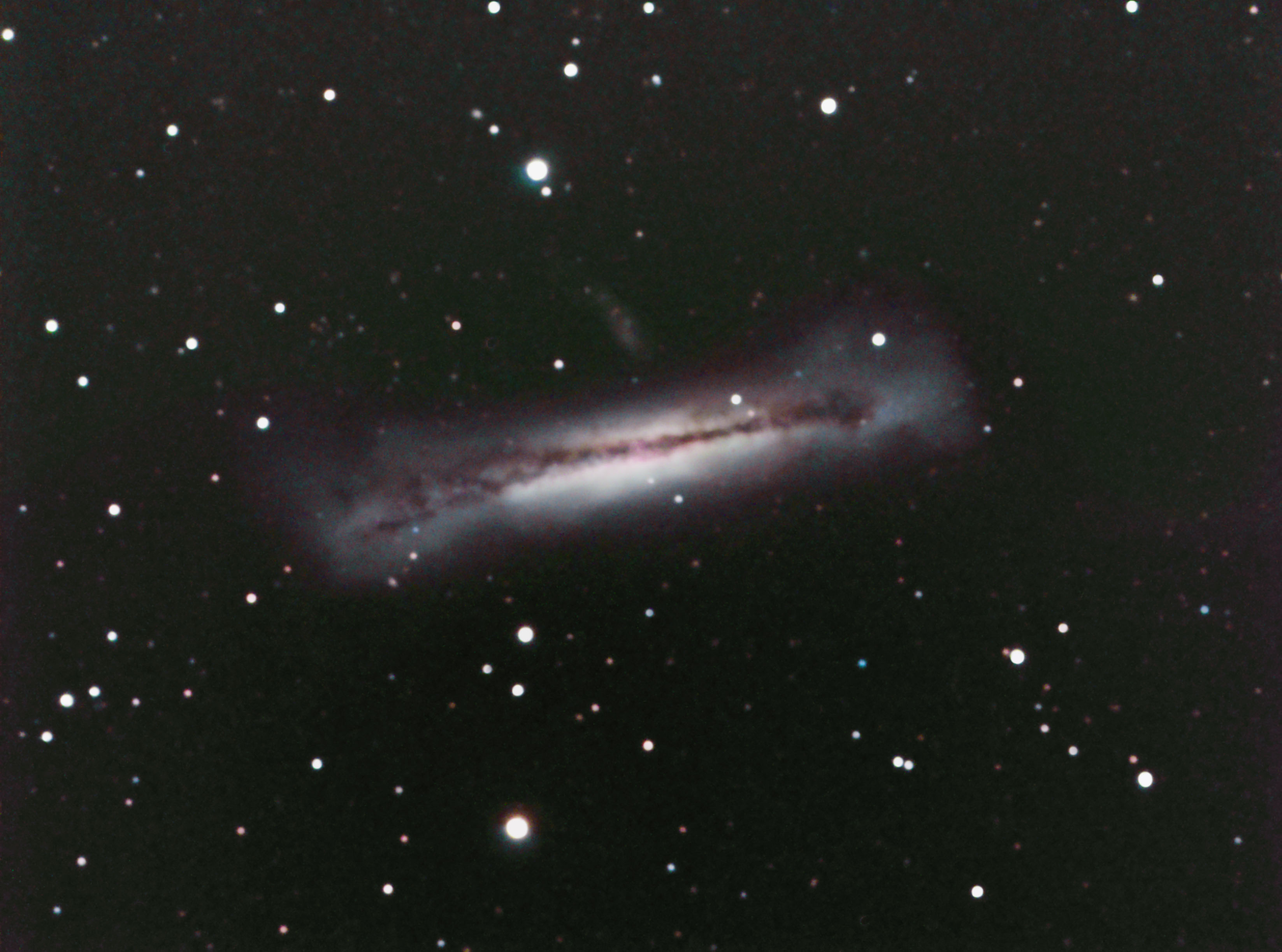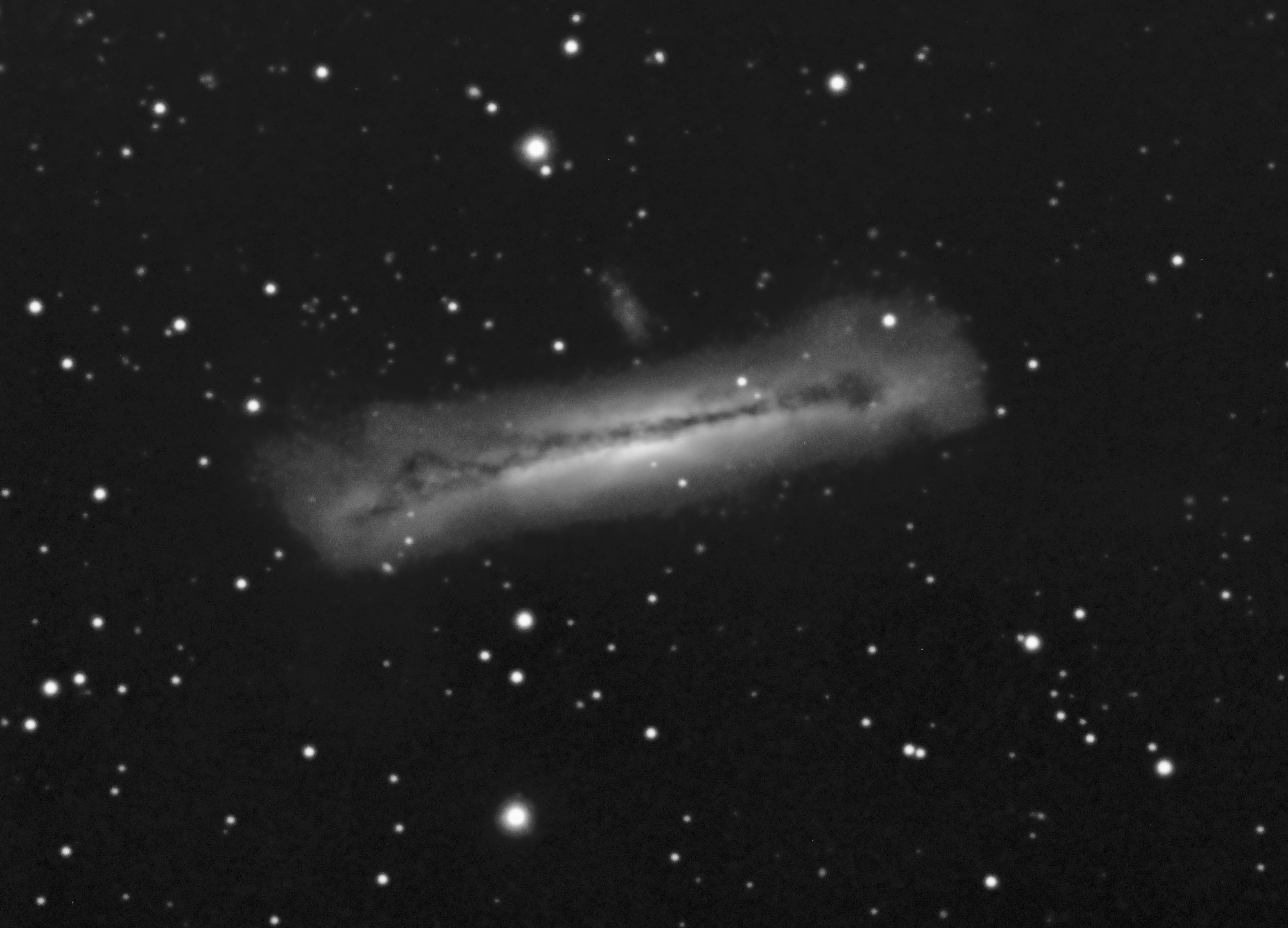| Messier 51- The
Whirlpool Galaxy One of the most popular objects of both amateur and professional astronomers, Messier 51 (M51), the Whirlpool Galaxy, was first discovered in 1773 by Charles Messier. Its companion galaxy (NGC 5195) was discovered in 1781 by Pierre Mechain. These two galaxies are interacting (merging) and have already collided at least twice. Estimated distance is about 37 million light years. |
Messier 87 -
Virgo A Discovered by Charles Messier in 1781, this is a super-massive lenticular galaxy that lies about 60 million light years from Earth. Virgo A is larger than our own Milky Way. At its center is a super massive black hole that weighs in at about 6.4 billion solar masses. Our Milky Way is estimated to contain up to around 190 globular clusters - M87 on the other hand contains, by some estimates, over 15,000 globs. |
NGC 891 If we could take a look at the Milky Way from a distance and from the side, this is what we would look like. NGC 891 is an edge-on spiral galaxy sometimes known as the Outer Limits Galaxy. It was discovered by William Herschel in 1784. It lies approximately 27 million light years away. |
|
Location: Ft. Davis, TX Date: May 6, 2013 Mount: AP 900GTO Telescope: Celestron 9.25" f/10 Cassegrain Camera: SBIG ST-4000xcm @ -22c Exposure: 11x10min. subs = 1hr 50min. |
Location: Bonny Doon Airport, CA Date: April 13, 2103 Mount: AP 900GTO Telescope: Celestron 9.25" f/10 Cassegrain. Camera: SBIG ST-4000xcm @ -28c Exposure: 19x3min. subs = 57min. |
Location: Bonny Doon Airport, CA Date: September 4, 2011 Mount: Losmandy G11 Go-To Telescope: Orion 190mm f/5.3 Mak/Newt Camera: SBIG ST-4000xcm @ -14c Exposure: 12x10min. subs = 2hrs. |
 |
 |
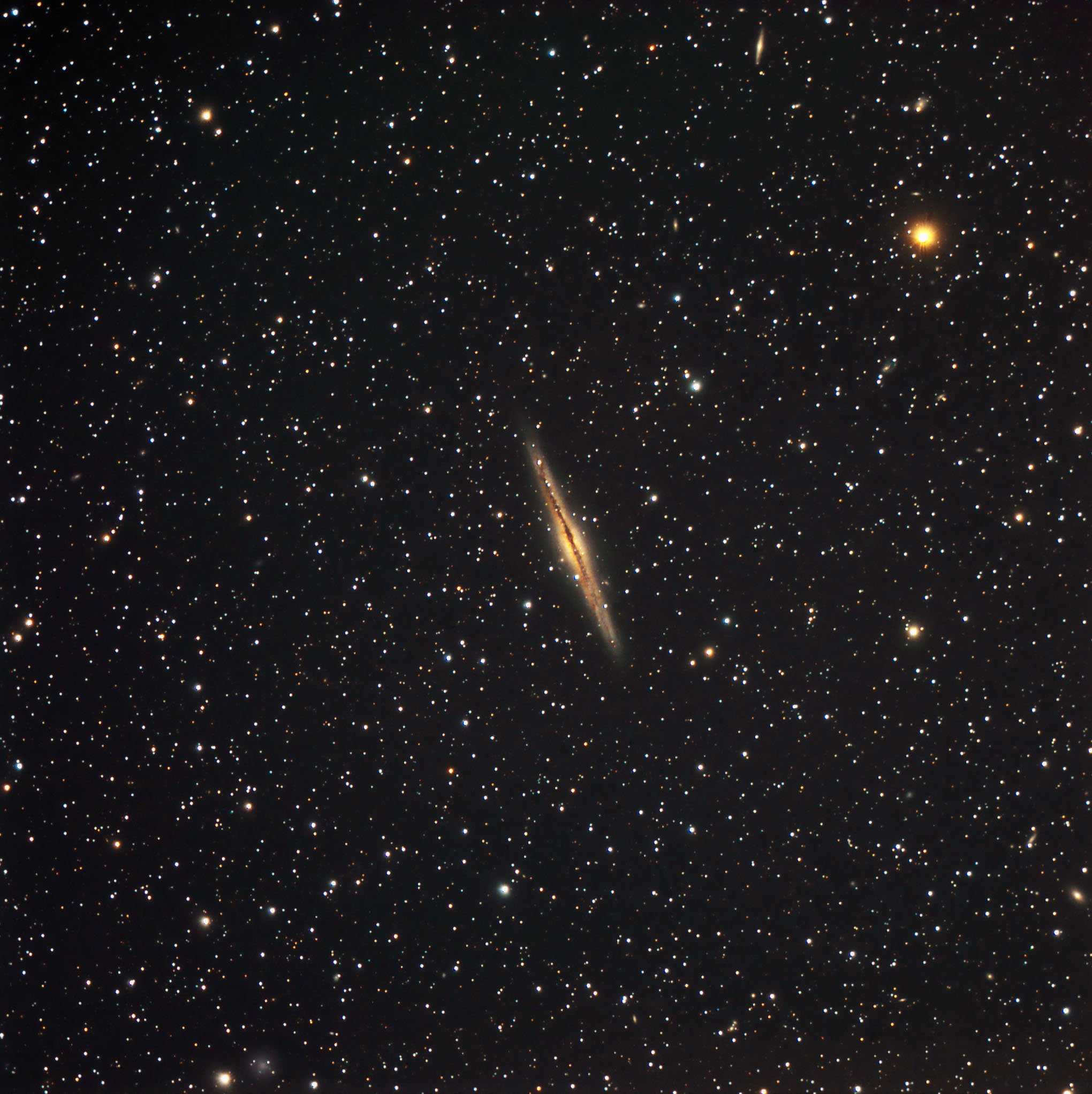 |
| IC 4895 -
Barnard's Galaxy Barnard's Galaxy was discovered by E. E. Barnard in 1884. A barred irregular galaxy, it lies 1.63 million light years away. |
Messier 33 - The
Triangulum Galaxy The Triangulum Galaxy is one of our Local Group of galaxies and is gravitationally bound to the Andromeda Galaxy. It is the third largest galaxy of our Local Group after the Andromeda Galaxy and the Milky Way. It is an average sized spiral galaxy located 3 million light years away. Also known as the Pinwheel Galaxy and contains 40 billion stars. |
NGC 147 NGC 147 is a dwarf spheroidal galaxy that is part of our Local Group of galaxies. It is a satellite galaxy of the Andromeda Galaxy and is 2.6 million light years distant. It was discovered by John Herschel in 1829. This was the first image I took with my new SBIG ST-4000xcm OSC camera while on a field trip to Big Sur with Dr. Rick Nolthenius' astro photography class from Cabrillo College. |
|
Location: Bonny Doon Airport, CA Date: September 16, 2012 Mount: AP 900GTO Telescope: Orion 190mm f/5.3 Mak/Newt Camera: ST-4000xcm OSC @ -14c Exposure: 9x10min. subs = 90min. |
Location: Bonny Doon Airport, CA Date: September 27, 2011 Mount: Losmandy G11 Go-To Telescope: Orion 190mm f/5.3 Mak/Newt Camera: SBIG ST-4000xcm OSC @ -20c Exposure: 15x10min. subs = 2hrs. 30min. |
Location: Big Sur, CA Date: October 8, 2010 Mount: Losmandy G11 GO-TO Telescope: Orion 190mm f/5.3 Mak/Newt Camera: SBIG ST-4000xcm OSC @ -18c Exposure: 3x10min. subs = 30min. |
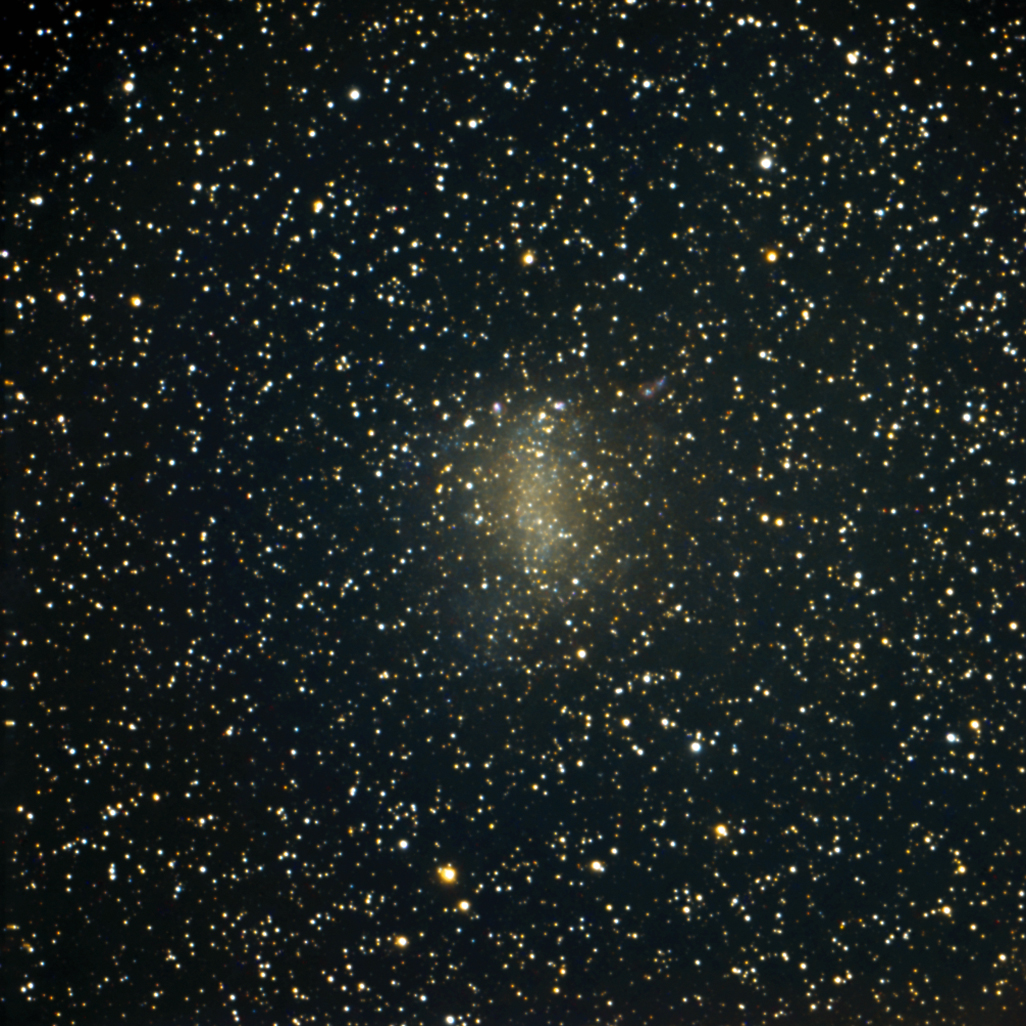 |
 |
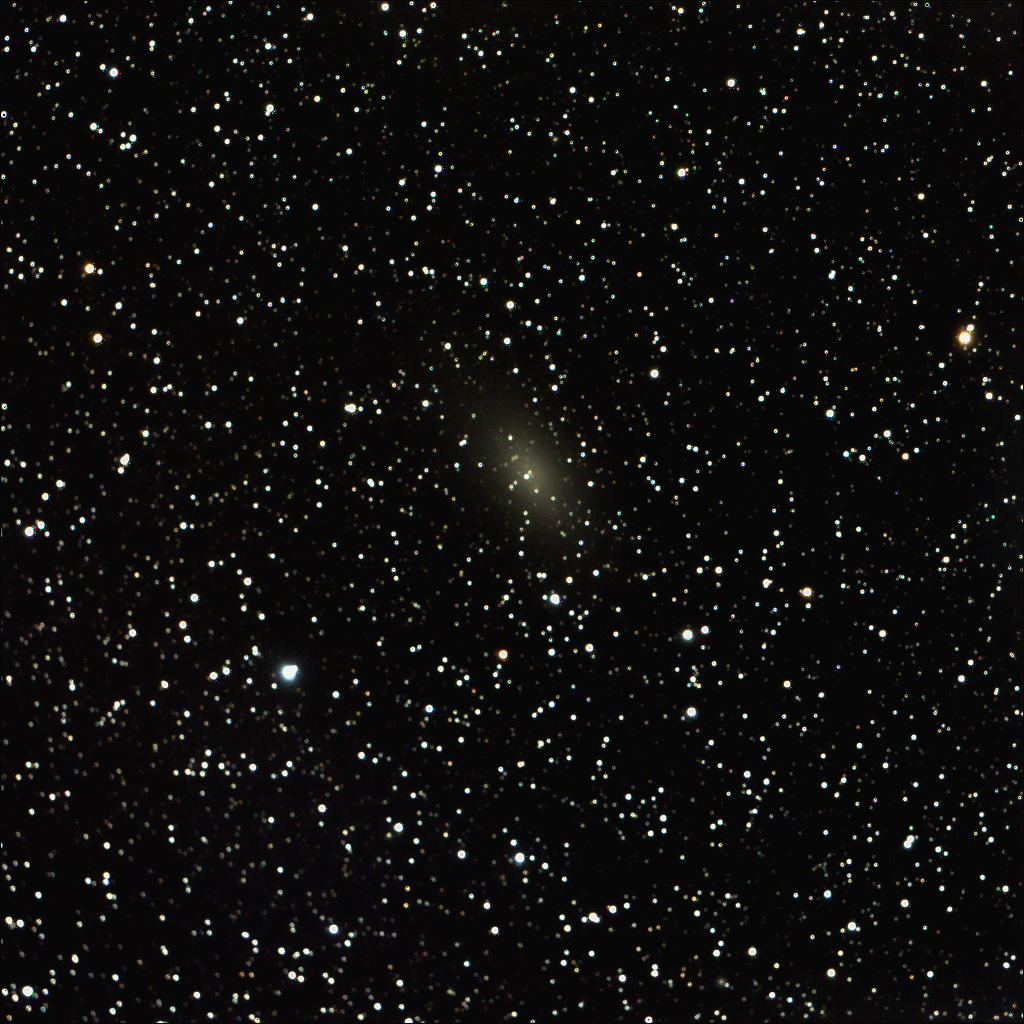 |
| Messier 74 Messier 74 is a face-on spiral galaxy. Its two well defined spiral arms make it what is known as a "Grand Design Spiral Galaxy." Discovered in 1780 by Pierre Mechain, it is around 35 million light years away with about 100 billion stars. It also has a medium sized black hole at its center that weighs in at around 10,000 solar masses. |
Messier 74 Here is a nice example of the difference between different sized telescopes. The image to the left was taken with an 8" f/5.3 (a much wider field of view) and this one was taken with a 9.25" f/10 (more magnification and a little tighter field of view). What a difference! |
Messier 81 -
Bode's Galaxy Messier 81 is a spiral galaxy located in the constellation Ursa Major and lies about 12 million light years from Earth. At its center is a black hole that weighs in at about 70 million solar masses. This galaxy was originally discovered by Johann Elert Bode in 1774, and was later re-identified and included in the Messier list by Charles Messier. On the left side is Holmberg IX, an irregular dwarf galaxy and a satellite galaxy of M81. It is named after Erik Holmberg, and is the youngest galaxy near the Milky Way. This object was pretty difficult to process. The outside temperatures down in Borrego Springs started to warm up and I could only get the camera cooled to -8c whch means lots of extra noise. |
|
Location: Bonny Doon Airport,
CA Date: October 23, 2011 Mount: Losmandy G11 Go-To Telescope: Orion 190mm f/5.3 Mak/Newt Camera: SBIG ST-4000xcm OSC @ -14c Exposure: 24x5min. subs = 2hr |
Location: Borrego Springs, CA Date: November 5, 2015 Mount: Losmandy G11 Go-To Telescoce: Celestron 9.25" f/10 Cassegrain Camera: SBIG ST-4000xcm OSC @ -20/22c Exposure: 14x15min. subs = 3hrs 30min. |
Location: Borrego Springs, CA Date: November 9, 2015 Mount: AP 900GTO Telescope: Celestron 9.25" f/10 Cassegrain Camera: SBIG ST-4000xcm OSC @ -08c Exposure: 15x10min. subs = 2hr. 30min. |
 |
 |
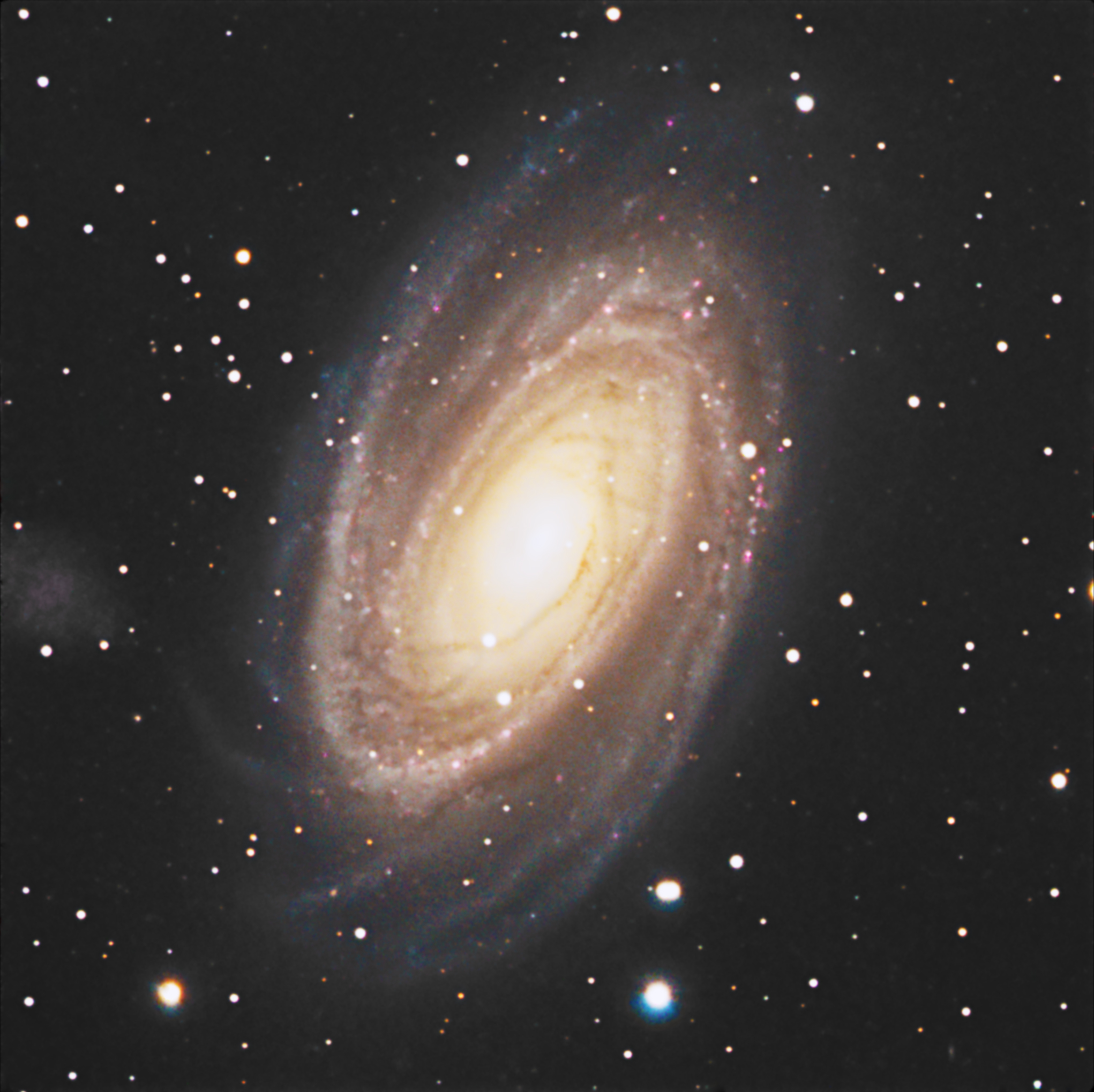 |
| Messier 81 -
Bode's Galaxy Discovered by Johann Elert Bode, Messier 81 is also known as Bode's Galaxy. It's 12 million light years away and has at its center a supermassive black hole of 70 million solar masses. This is only 1 hr of exposure time. I just wanted to get something for the evening. I was able to re-do this object in 2015 with much better results (later on this page). |
NGC 253 - The
Sculptor Galaxy The Sculptor Galaxy is a spiral galaxy that is also a starburst galaxy. A starburst galaxy is a galaxy that is undergoing a period of intense star formation. This one is a favorite of astro photographers. It was discovered by Caroline Herschel in 1783. This image was taken while attending an astro photography class at Cabrillo College. |
NGC 3628 NGC 3628 was discovered by William Herschel in 1874. It is an edge-on unbarred spiral galaxy that is about 35 million light years away. It has a very long tidal tail. The dust and outer edge of the spiral arms are very well defined. This image was taken in May 2013 at the Texas Star Party. I was only able to get 30mins. exposure time before the weather rolled in for the rest of the week. |
|
Location: Bonny Doon Airport,
CA Date: February 3, 2011 Mount: Losmandy G11 Go-To Telescope: Orion 190mm f/5.3 Mak/Newt Camera: SBIG ST-4000xcm OSC @ -24c Exposure: 12x5min. subs = 1hr. |
Location: Bonny Doon Airport, CA Date: November 22, 2008 Mount: Losmandy GM-8 Telescope: Meade LDX-75 8" f/4 Camera: SBIG ST-2000xcm OSC @ -25c Exposure: 4x10min. subs = 40min. |
Location: Texas Star Party,
Ft. Davis, TX Date: April 6, 2013 Mount: AP 900GTO Telescope: Celestron 9.25" f/10 cassegrain Camera: SBIG ST-4000xcm OSC @ -22c Exposure: 3x10min. subs = 30min. |
 |
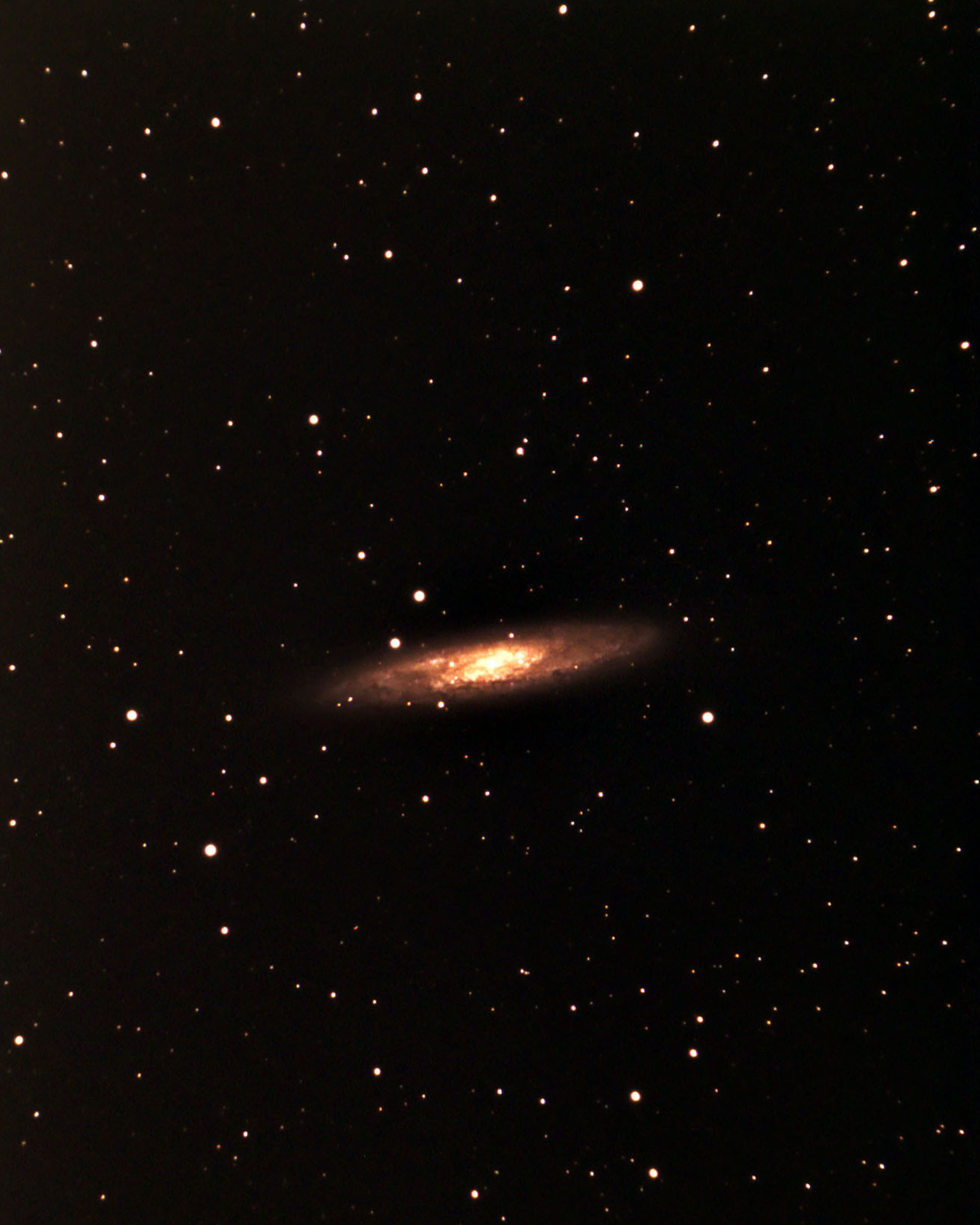 |
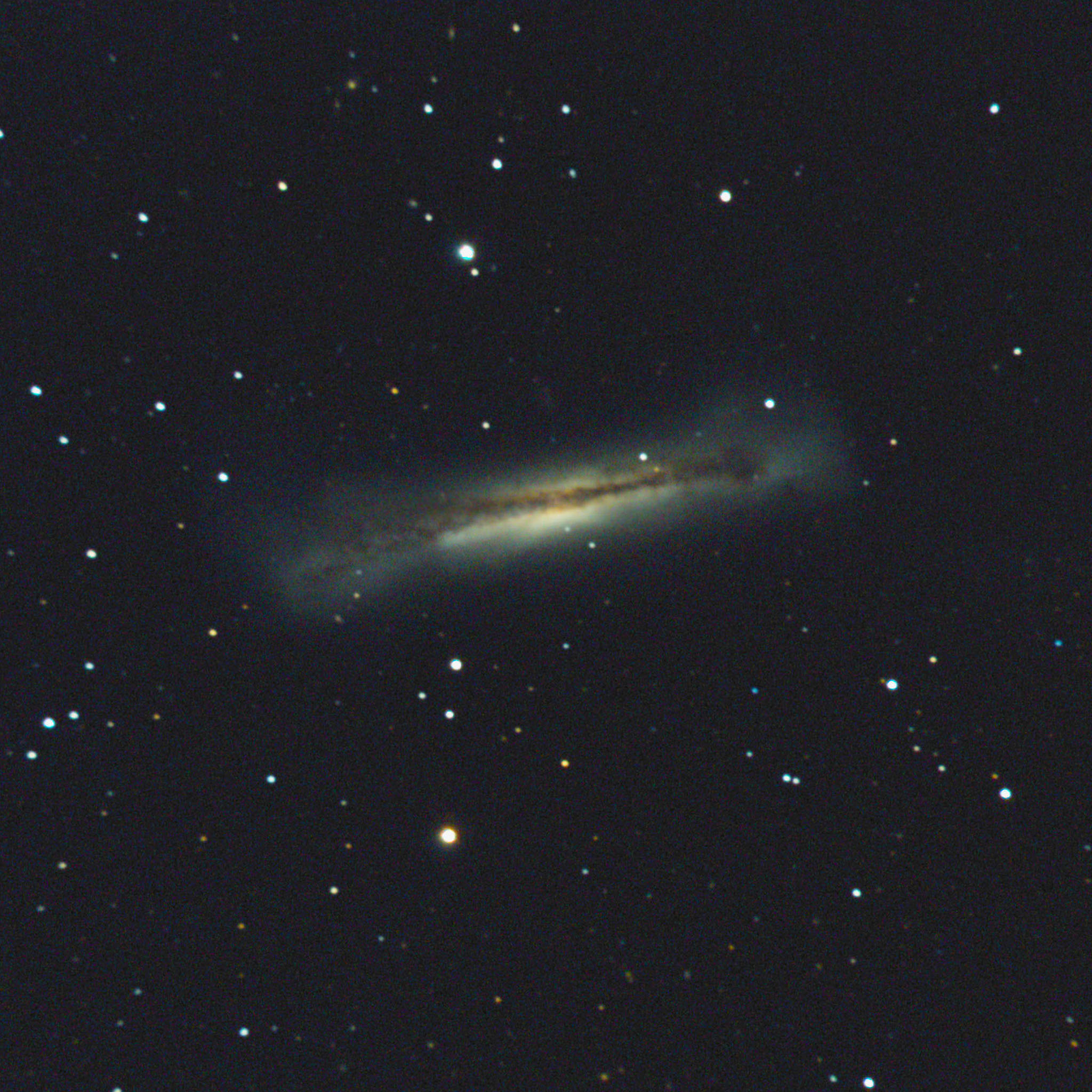 |
| NGC 4631 - The
Whale Galaxy The Whale Galaxy is an edge-on spiral galaxy. It is also a starburst galaxy - one that is undergoing an intense period of star formation. It has a slightly distorted appearance which gives it the look of a whale. |
Messier 31 - The
Great Andromeda Galaxy The Andromeda Galaxy is one of our closest neighbors at only 2.5 million light years away. It is a spiral galaxy that is roughly the same size as our own Milky Way Galaxy. It will collide with the Milky Way in about 4 billion years. Eventually the two will merge to form a giant elliptical galaxy. Astronomers suspect that it contains around 26 black holes with 7 of them within 1000 light years of the galactic center. |
NGC 7331 - The
Deerlick Group NGC 7331 is the large galaxy in the foreground. Off to the left is the Deer Lick Group of galaxies. They seem to be all together, but NGC 7331 is in fact much closer and actually not part of the group. |
|
Location: Bonny Doon Airport, CA Date: April 14, 2012 Mount: Losmandy G11 Go-To Telescope: Orion 190mm f/5.3 Mak/Newt Camera: SBIG ST-4000xcm @ -26c Exposure: 13x10min. subs = 2hrs. 10min. |
Location: Cabrillo College Observatory, CA Date: September 24, 2008 Mount: Losmandy GM-8 Telescope: Megrez 80mm APO Camera: SBIG ST-2000xcm @ -25c Exposure: 5x5min. subs = 25min. |
Location: Cabrillo College Observatory, CA Date: September 16, 2009 Mount: Losmandy GM-8 Telescope: Meade LDX-75 8" f/4 Camera: SBIG ST-2000xcm @ -25c Exposure: 5x5min. subs=25min. |
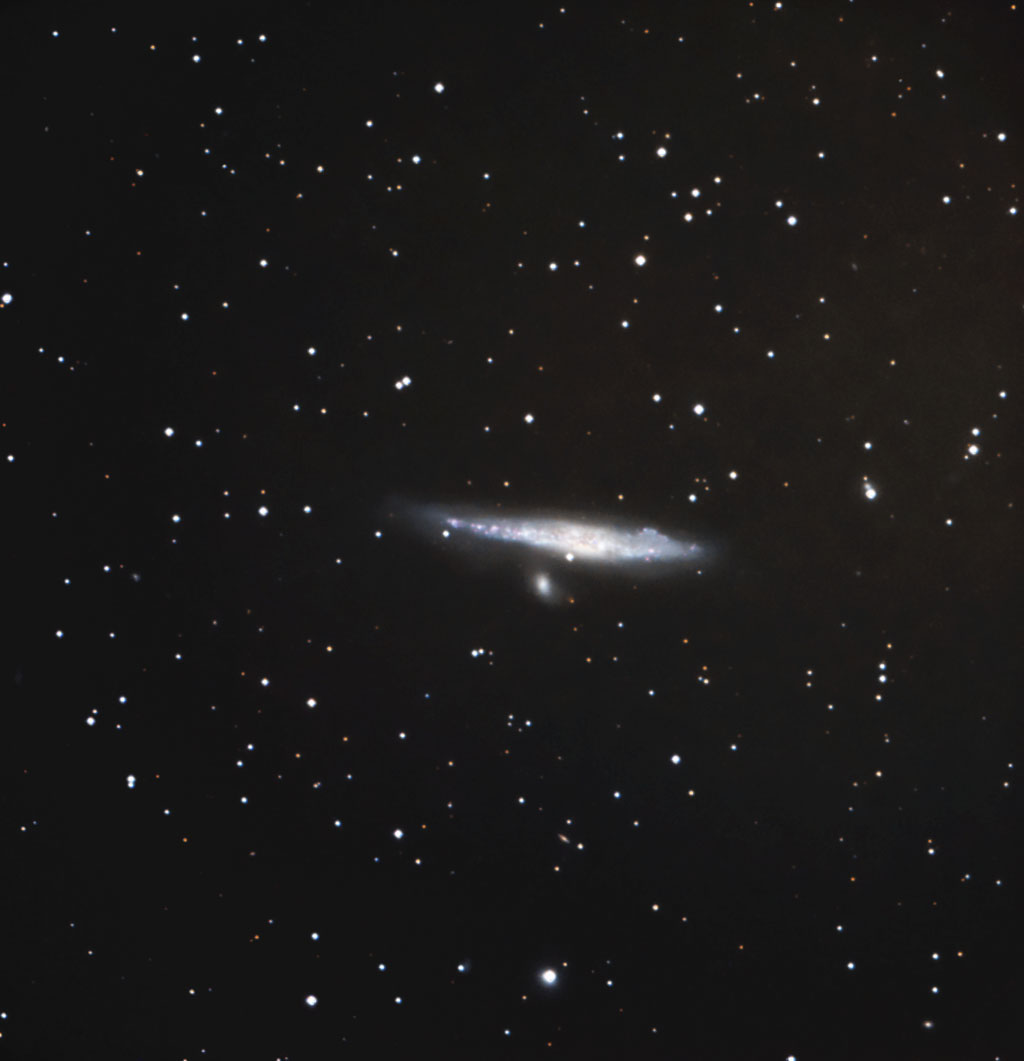 |
 |
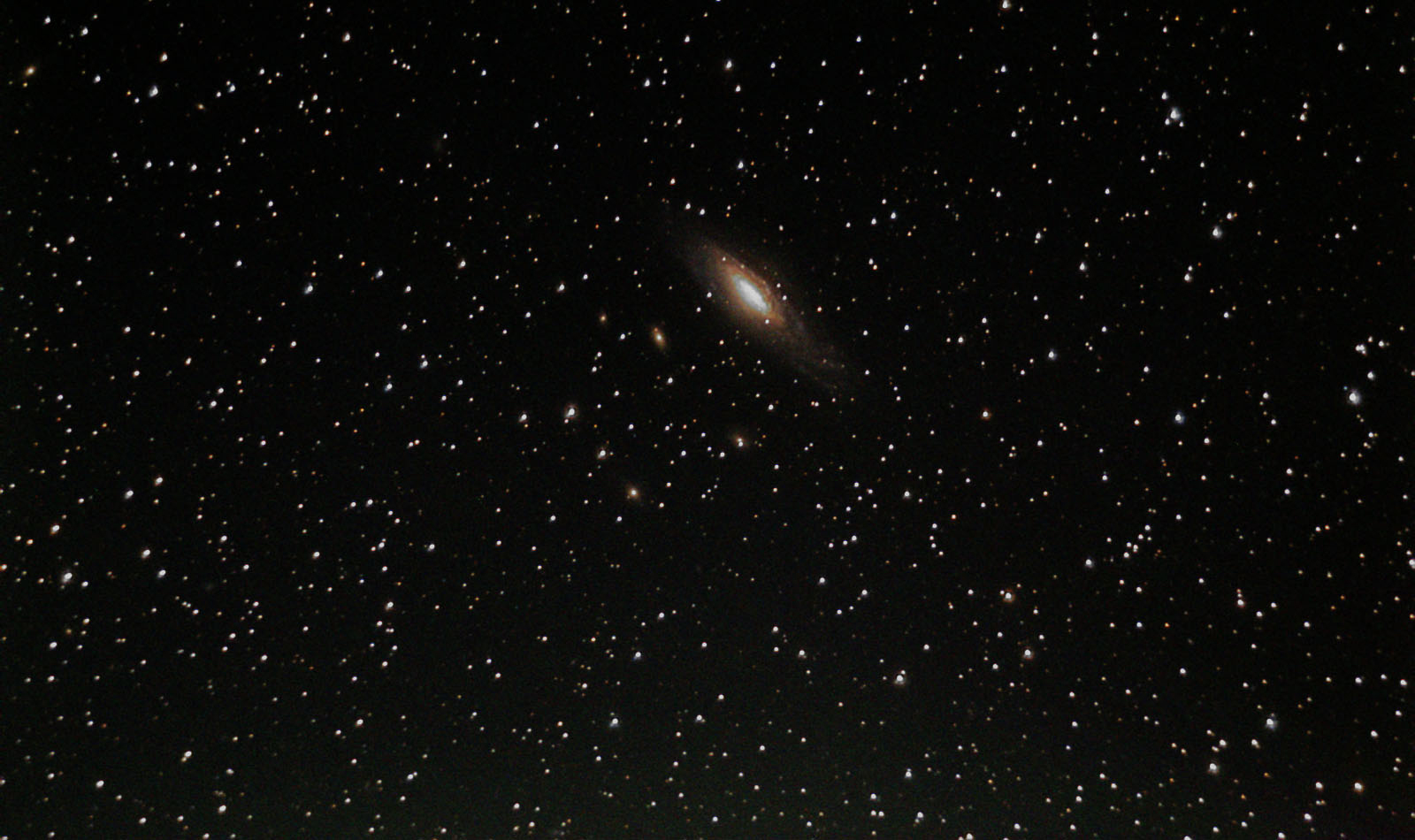 |
| Messier 101
Supernova - Before Picture (4/1/11) This one and the other two pictures to the right were really fun to do. An opportunity to do a sequence of images on a rare event like this was a blast, so I wasn't so concerned about getting nice pictures as getting anything at all. To start off, my friend Fred and I were down at Lake San Antonio for a couple of days doing some astro photography. At least we were trying... I was just trying to learn how to do self-guiding with the SBIG ST-4000xcm and the G-11. |
Messier 101
Supernova - 8/29/11 (Two weeks in) Almost five months later, all of a sudden the astronomy forums and news were all aflutter about a supernova in M101. This picture was taken two weeks after the supernova began. It still hasn't reached its peak brightness yet. It is the brighter spot located at the 5:30 position from the center of the galaxy and at the end of the spiral arm just below the first large vertical dark region. For this shot I was at home out on the deck with the G-11 and the Meade 10" f/10 SCT with a 6.3 focal reducer. |
Messier 101
Supernova 9/3/11 (Five Days Later) Here is the last image I got of the Supernova. It has been getting brighter for about four weeks now and is just hitting its maximum brightness. If you click on the picture itself and then click on it again to zoom in, you can see that the supernova is outshining the center of the galaxy itself. For a short peroid a supernova will typically be brighter than the entire galaxy. |
|
Location: Lake San Antonio, CA Date: April 1, 2011 Mount: Losmandy G11 Go-To Telescope: Meade 10" f/10 SCT Camera: SBIG ST-4000xcm OSC @ -20c Exposure: 20x1min. subs = 20min. |
Location: Watsonville, CA Date: August 29, 2011 Mount: Losmandy G11 Go-To Telescope: Meade 10" f/10 SCT w/6.3 Focal Reducer Camera: SBIG ST-4000xcm OSC @ -20c Exposure: 20x1min. subs = 20min. |
Location: Bonny Doon Airport,
CA Date: September 3, 2011 Mount: Losmandy G11 Go-To Telescope: Orion 190mm f/5.3 Mak/Newt Camera: SBIG ST-4000xcm OSC @ -14c Exposure: 13x5min. subs = 1hr. 5min. |
 |
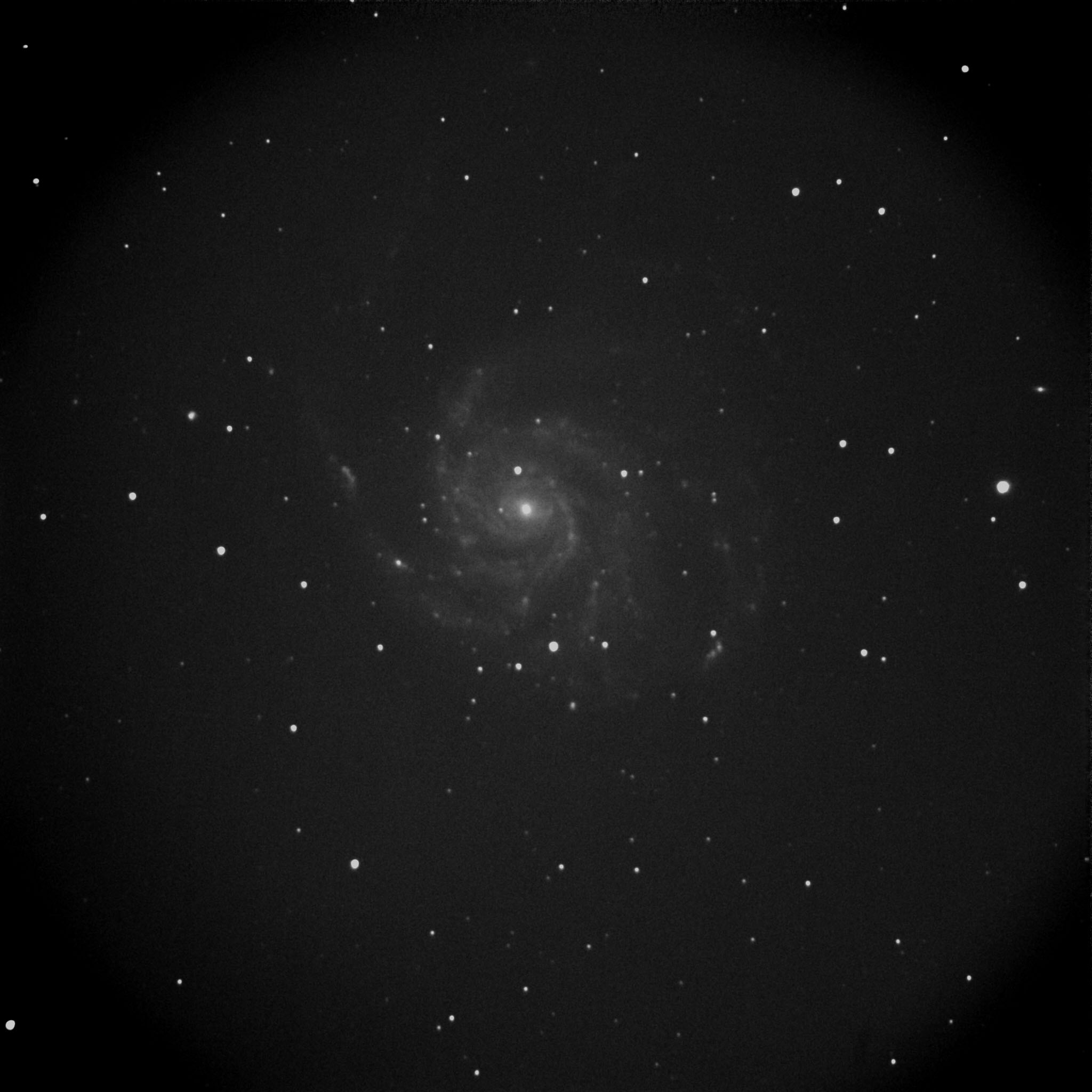 |
 |
| NGC 6946 - The
Fireworks Galaxy Discovered by William Herschel in 1798, NGC 6946 is a spiral galaxy that lies about 22.5 million light years away. |
NGC 6946 - The
Fireworks Galaxy This is my first attempt at combining images that were taken at different times (two years apart) and different locations (about 400 miles apart). The image on the left started with 7x10min subs. Two years later I added 20x10min subs fo a total of 27 subs. Total exposure time = 4hrs 30mins. |
NGC 253 - The
Sculptor Galaxy Here is another version of the NGC 253. Unlike the previous image above, this one was taken with a completely different imaging setup. It is a fairly difficult object to image in that it lies very low in the southern sky. It was taken at the Nightfall Star Party in Borrego Springs, CA. |
|
Location: Bonny Doon Airport, CA Date: August 7, 2013 Mount: AP 900GTO Telescope: Celestron 9.25" f/10 Cassegrain Camera: SBIG ST-4000xcm OSC @ -18c Exposure: 7x10min. subs = 1hr. 10min. |
Location: Golden State Star Party - Adin, CA Date: July 15. 2015 Mount: AP 900GTO Telescope: Celestron 9.25" f/10 Cassegrain Camera: SBIG ST-4000xcm OSC @ -14c Exposure: 27x10min. subs = 4hr. 30min. |
Location: Borrego Springs, CA Date: November 1, 2014 Mount: AP 900GTO Telescope: Celestron 9.25" f/10 Cassegrain Camera: SBIG ST-4000xcm OSC @ -08c Exposure: 15x10min. subs = 2hr. 30min. |
 |
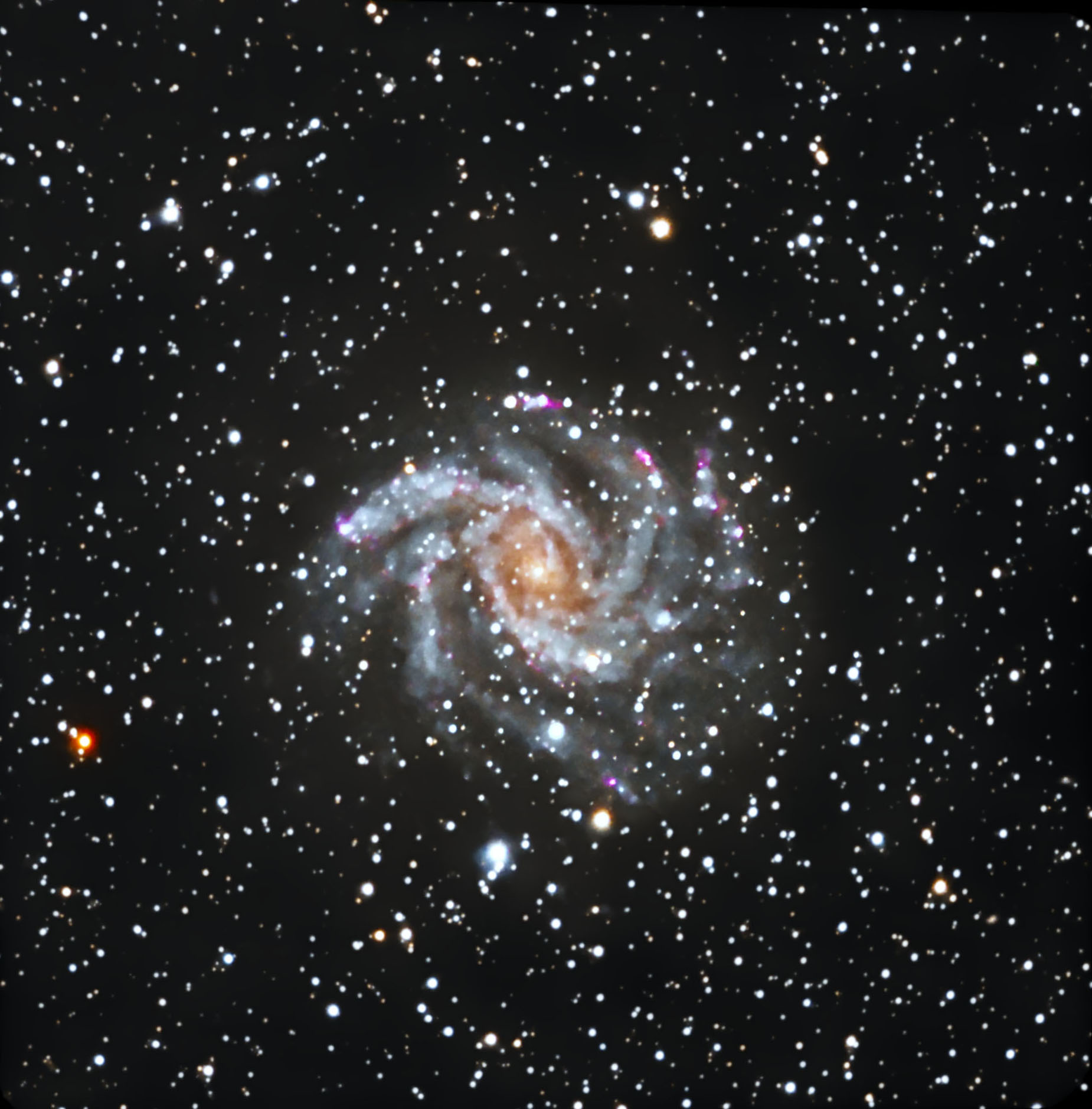 |
 |
